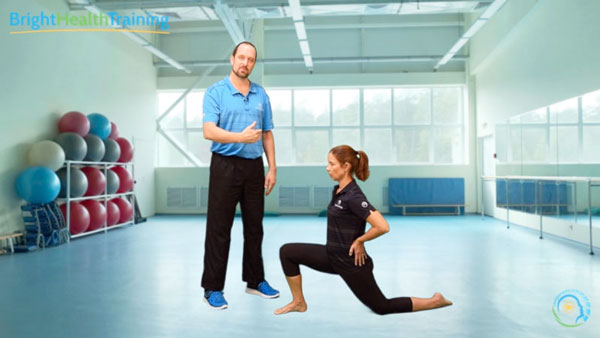This article was published in the ANTA Journal (The Natural Therapist, July 2016, vol 31, No 2) with Massage Therapists, Manual Therapists and Myotherapists in mind.
Holism
Remember the concept of holism or being holistic? For some of us, the first session of the first day at college was spent talking about the concept of being holistic. Unfortunately, this concept often gets lost when working from a biomedical perspective. We can easily slip into a pathological or biomechanical model that reduces our thinking to pathological tissue only. Soon we are targeting a specific pathological process from the perspective of finding the appropriate intervention to correct the problem, instead of addressing the “whole of person” to gain the largest therapeutic benefit.
Many times, targeting a specific tissue will be an appropriate treatment, particularly with acute complaints. But when the research suggests that multiple body systems need to be considered, then holism becomes an essential process in treatment.
One place where there is often too much emphasis on one body system is in musculoskeletal health. And this is especially the case when looking at chronic pain. In most cases the focus is on finding the “dysfunctional” or damaged tissue, often via imaging such as MRI or complex biomechanical assessment. This works very well in cases of acute musculoskeletal injury but not as well when pain becomes chronic.
When it comes to chronic pain, holism becomes essential again. The research tells us it is important to look at the human being as a multifactorial, complex interaction of many different systems. Another way of describing this approach is the biopsychosocial perspective, and it has shown to be very relevant in chronic pain management1. The risk in chronic pain management is that we become short sighted, focusing on minute structural asymmetry, apparent tissue damage or something that shows up on a diagnostic image. The problem here is that we have misunderstood the mechanisms behind pain and some therapeutic approaches may be creating more problems than solutions.
Pain
Hopefully by now, you have heard the message that “pain is an output of the brain”2. This simple statement is the result of many years of neurological, psychological and physiological study. The results of this research indicate that we should now be thinking of nociception not as pain, but “danger” signals to the brain that can be interpreted as pain. But pain can occur independent from nociception, and nociception can be blocked at the spine and sub cortical areas of the central nervous system. In other words, nociception does not equal pain.
As far back as 1994, a study published in the New England Journal of Medicine showed that diagnostic imaging in the lumbar spine was a poor indicator of pain3. In this particular study it was shown that large percentages of asymptomatic individuals demonstrated disc bulges, tears and osteophytes on diagnostic imaging. In other words, they had significant damage to their spine that showed up on MRI but no pain, none, zero, zilch.
So it is possible to have tissue damage and no pain, what about pain without tissue damage? Absolutely, remember phantom limb pain? Phantom limb pain was thought of as triggered by nerve damage from an amputation site, until it was noticed that people born without limbs could still develop phantom limb pain4.
So we now know that pain can occur independently from nociception, and is ultimately an output of the brain. Researchers such as Butler and Moseley explain that pain is a normal response that acts as the body’s warning system to danger2. The brain takes in huge amounts of information from the body’s sensory organs all the time, including nociceptors. If the brain interprets this information as dangerous it will trigger a pain stimulus to force the body into a protective response.
Nociception in most cases will be recognised by the brain as an unpleasant sensation and pain is a common response. This is generally what happens in acute injury, strong nociception and strong pain response. In most cases, acute injuries recover in 6 to 8 weeks. Fractures, sprains, even many surgeries heal in close to 6 to 8 weeks. But for many, pain can continue even after the tissues had healed.
This is what occurs with chronic pain, or neuropathy, a state where the brain has learnt to create a pain response, even though at the site of the injury, tissue healing has occurred. This can occur many ways including central changes to the brain or spinal cord. We now understand that factors such as emotion and environment play a huge part in changes that occur within the nervous system that can lead to chronic pain.
Biopsychosocial Factors
It is now very well proven that psychological and social factors play a larger role in the recovery from certain injuries (such as lower back) as the amount of tissue damage that occurred. Organisations such as Workcover NSW are well aware of this, one of their standard outcome measures from lower back pain is the Orebro musculoskeletal screening questionnaire. This outcome measures asks more questions about someone’s belief around their injury, than it does about the damage that occurred to their back. This outcome measure is highly accurate to when predicting if someone will recover from the injury (95%), return to work in six months (81%) or fail to return to work (86%).
It is pretty clear from MRI studies that as chronic pain develops, the emotional centres of the brain tend to be more active while the sensory areas of the brain become less active5. This triggers an increase in the levels of perceived threat to the body and the increased likelihood of a pain response. It could be thought of very simply, the more the brain responds to the perception of threat, the more likely it is to trigger a pain response. The opposite also appears to be true, the less the brain responds to stimuli from damaged tissue, the less likely there will be a pain response. Perhaps it could be put another way, your brain has the capacity to change how it will respond to information about tissue damage, and this is largely determined by previous experience.
Movement
Movement approaches are being demonstrated as one of the best ways to address pain, and not just chronic pain. Movement in combination with client education, mindfulness strategies and lifestyle changes are showing clinical efficacy in areas where previous strategies have struggled6. Once it becomes clear that pain is a complex interaction between body tissues and the central nervous system, then is becomes clear that a more holistic or biopsychosocial approach should be employed.
Active movement strategies that are targeted at making changes to brain function are becoming very popular amongst musculoskeletal therapists of all types and the efficacy of these approaches are growing7, as are mindfulness interventions8 and integrated approaches such as yoga9.
At the same time there is little to no evidence for some medical approaches such as opioid analgesia for chronic lower back pain as a long-term strategy. Opioid analgesia does have low to moderate quality evidence for disability and pain in the short term, but it is becoming clear that other treatments need to be used to get meaningful long-term changes for chronic pain sufferers 10.
Summary
Chronic pain is difficult to treat. Anyone that has worked with a chronic pain sufferer knows that it is complex and much more than a physical injury. Evidence grows to show that holistic or biopsychosocial approaches can get results for chronic pain sufferers as well as help preventing chronic pain from occurring in the first place. For natural therapists, holism has been a central value that sometimes becomes compromised with reductionist scientific approaches. So it is important to recognise, that when dealing with pain, the whole of person approaches, are actually what the science is recommending.
Written by Aran Bright
B. HSc (Musculoskeletal Therapy) Adv Dip Myotherapy
18th July, 2016
1. Nijs, J. et al. 2014 A modern neuroscience approach to chronic spinal pain: combining pain neuroscience education with cognition targeted motor control training. Physical Therapy, vol 94, pp730-738.
2. Butler, D. Moseley, L. 2013 Explain Pain NOI Group Publications.
3. Jensen, m. et al.1994 Magnetic imaging on the lumbar spine in people without back pain, New England Journal of Medicine, Vol 331 pp 69-73.
4. Melzack, R. et al. 1997. Phantom limb pain in people with congenital limb deficiency or amputation in early childhood. Brain vol 120, pp 1603-1620.
5. Seminowicz, D. et al. 2009 MRI structural brain changes associations with sensory and emotional function in a rat model of long-term neuropathic pain. NeuroImage. Vol 47 No 3 pp 1007-1014.
6. Fersum, V. et al 2012. Efficacy of classification based cognitive functional therapy in patients with non-specific chronic lower back pain: a randomised controlled trial. European Journal of Pain. Vol 19 No 6. Pp 916-928.
7. Searle, A. et all 2015. Exercise interventions for the treatment of chronic low back pain: a systematic review and meta-analysis of randomised controlled trials. Clinical Rehabilitation. Vol 29 No 12 pp 1155-1167.
8. Veehof, M. et al. 2016 Acceptance- and mindfulness-based interventions for the treatment of chronic pain: a meta-analytic review. Cognitive Behaviour Therapy. Vol 45 No 1
9. Cramer, H. et al. 2013. A Systematic Review and Meta-analysis of Yoga for Low Back Pain. Clinical Journal of Pain. Vol 29 No 5 pp 450-460.
10. Chapparro, L. et al 2014. Opioids Compared With Placebo or Other Treatments for Chronic Low Back Pain: An Update of the Cochrane Review. Spine. Vol 39 No 7 pp 556-563.


